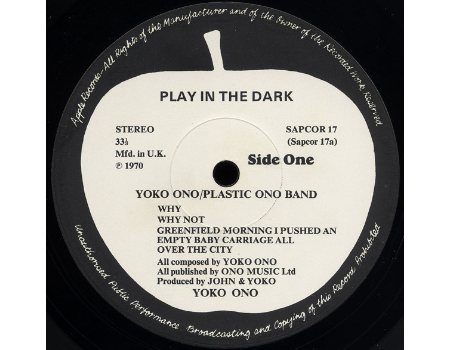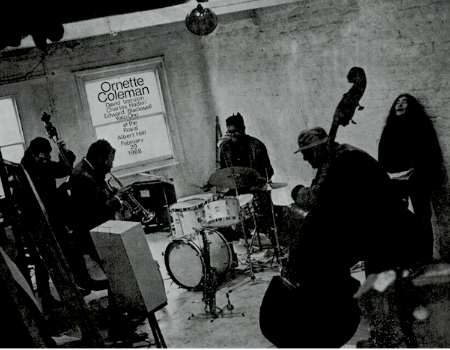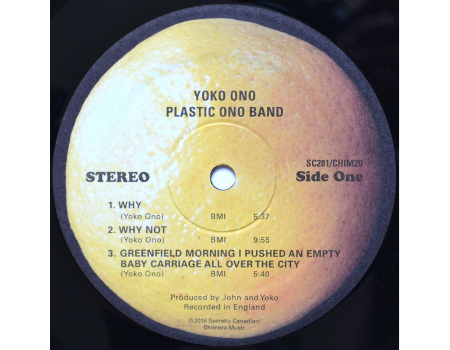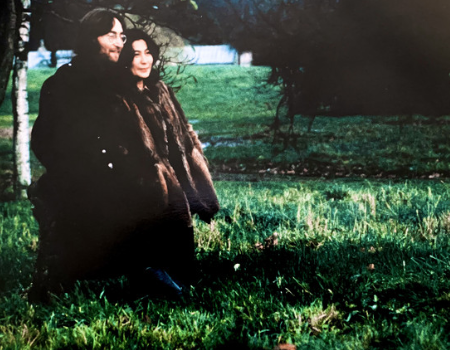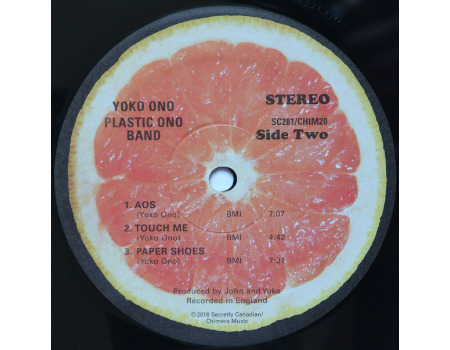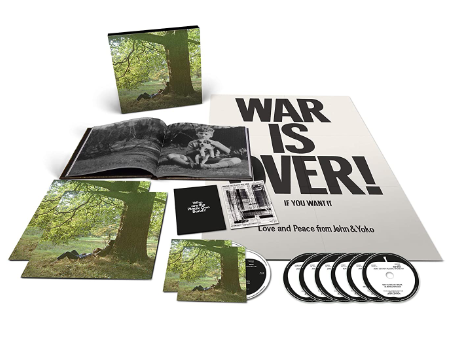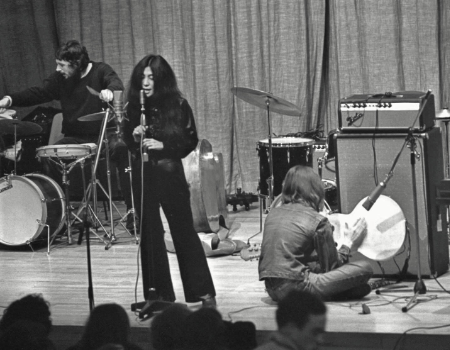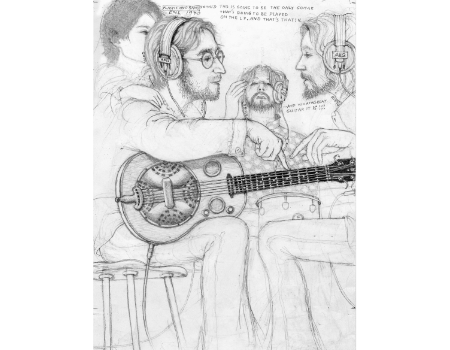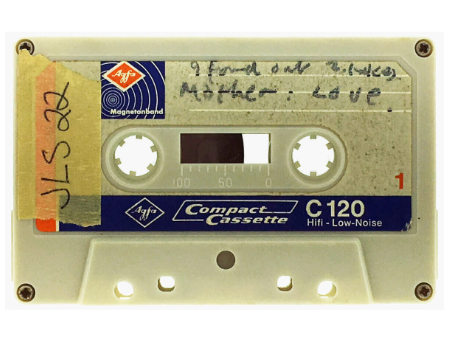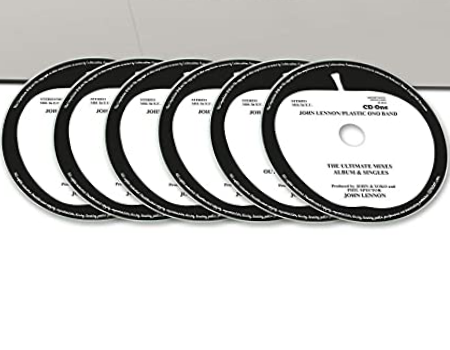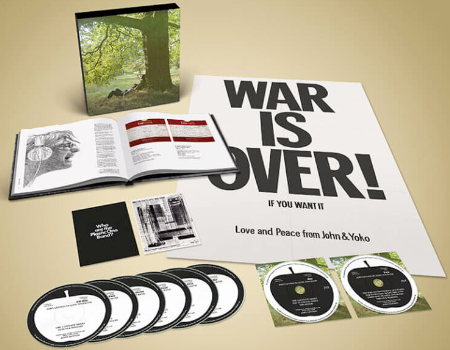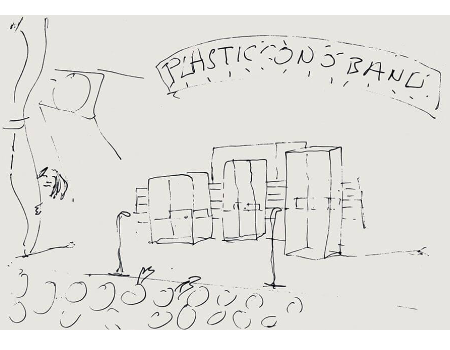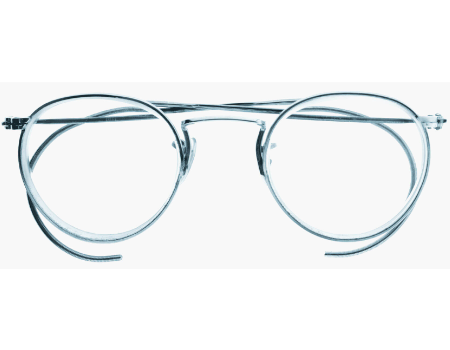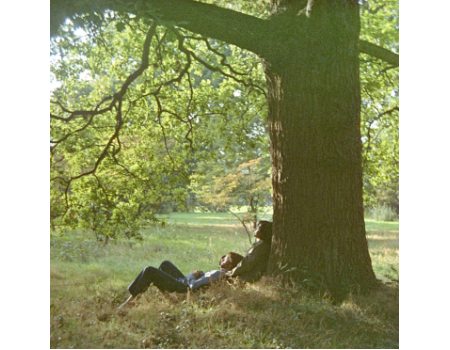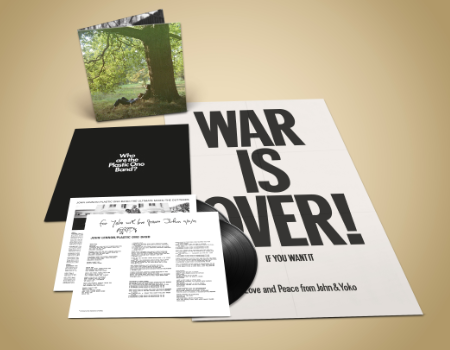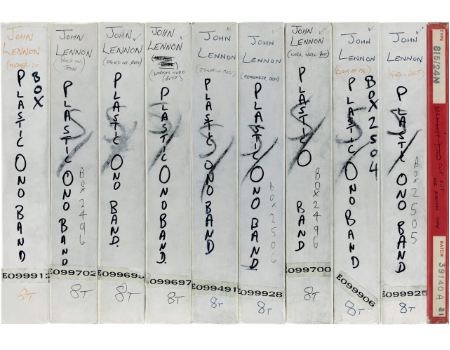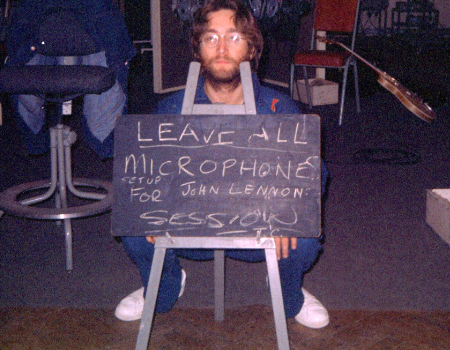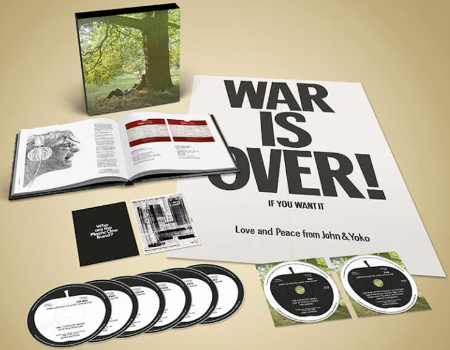In 1970 John Lennon released an album called Plastic Ono Band which was quite shocking to most fans of The Beatles’ music; noted for its brutal honesty and raw stripped back presentation, it went on to become a classic which many regard as Lennon’s finest work.
This album has recently been celebrated in brand new 50th Anniversary stereo and surround sound remixes which I reported on last week. In case you missed those reviews, please click on these numbers ( 1, 2, 3 ) to jump to the whole three part series. If you are not familiar with the album or the boxed set (which comes out later this week), reading those reviews will provide useful perspective to understand and appreciate another album recorded during those same sessions.
Simultaneous with the release of Lennon’s album, his wife and life partner Yoko Ono also issued her first solo record under the same title. Both albums, however, couldn’t be more different and that is the focus for the review today, looking into Yoko’s brilliant, futuristic and ultimately timeless recording. Included on the second Blu-ray Disc in the deluxe edition boxed set of Plastic Ono Band are the complete live tracking sessions featuring Ono backed by a power trio comprised of Lennon’s electric guitar and feedback with rock solid rhythmic support from drummer Ringo Starr and their close friend Klaus Voorman on bass. These recordings are quite incredible and incredible sounding — presented in 192 kHz, 24-bit fidelity — all offering fascinating insight into how her first album was created.
These recordings — and her subsequent albums — were extremely influential on artists as diverse as The B-52s, Lene Lovich, Sonic Youth, The Flaming Lips and many others.
There are some very insightful comments about these live recording sessions included in the Plastic Ono Band 50th Anniversary boxed set from people involved with making the album including Yoko, John Lennon, Klaus Voorman as well as engineers John Leckie and Phil McDonald. These personal notes shine important light on the album, its intent and creation better than I could so rather than edit them I’ll just share these with you complete and unedited:
Yoko: “When John was recording, I was mostly in the control room and John was making his music and sometimes he had to fool around a bit just to get inspired. He just kept on jamming and then suddenly I realized it was just really beautiful jamming, he’d started something very unusual with the guitar. I was listening to what they were doing and I just couldn’t help it. I thought, ‘well, I just have to join them. This is great!’”
Klaus: “We knew Yoko was gonna do her album. We didn’t know how it was actually going to work or what she was going to do. We heard a few tracks she did and I found that very interesting. There was some great horn player, I think it was Ornette Coleman. She had some great musicians and three jazz players, really really good. So we tried to do the same thing and John was open to it.”
Yoko: “The kind of improvisation that I was doing by myself only had to do with my body rhythm, when you just totally rely on your body and let your body take you to wherever the body wants to go, it seems like all the strange things come out. I’m letting my body do it and that startles me too. It’s almost like the Primal Therapy thing and like the Japanese kind of vocal, or the operatic vocal, all the moaning and groaning and screaming, all kinds of things that I experienced in my life came out.”
Phil McDonald: “I think what people didn’t realize was the fact that she sang as in Japanese, which some classical Japanese singers sing, and this screaming that she did was actually part of her culture. To us, it sounded like screaming but to her it was a musical note. To get this ultimate scream, it could take a while to produce. They weren’t ordinary screams, they were yells, demonstrative. They were calculated, and I don’t know how the heck she did it.”
Lennon: “I’m a cinema verité guitarist and you have to break down your barriers to be able to hear what I’m playing. There’s a point on the first song where the guitar comes in and even Yoko thought it was her voice. It became like a dialogue rather than a monologue and I like that, stimulating each other. And that happened in the drumming and bass too, they get like that too. And it’s very interesting that you don’t know who is really inspiring who, it just goes on like that.”
Over the course of the live jam session recordings we indeed hear the framework for what became Yoko Ono’s Plastic Ono Band album emerging and it’s a wonderful journey.
Ringo and Voorman drive the rocking-yet-sympathetic rhythm section, giving Lennon the freedom to generate various noises and feedback created with his guitar, often in a kind of duet with Yoko’s vocal improvisations.
Where all this gets especially interesting is when you go back and listen to the final album and you can understand better how it was crafted. Listening to the live sessions sandwiched between reference spins of the final album, you realize Yoko had a quite clear vision for the kind of recording she wanted to deliver. Lennon, Ringo and Klaus Voorman laid down an array of throbbing proto-punk-ish blues rock jams which Yoko took to another level with her inspired vocal treatments.
According to the Plastic Ono Band boxed set liner notes: ”Yoko edited, manipulated, sped-up, slowed down and augmented her chosen improvisations, adding sound effects and delays to create her album Yoko Ono/Plastic Ono Band.” I recently bought a nice reissue of Yoko’s Plastic Ono Band album and while the vinyl sounds great — and the final mix terrific — these live sessions are almost rawer and richer if that is possible. Ultimately, however, I do like the final album better as the impact of Ono’s production is important. For example, cutting suddenly from heavy jams into the sound of subway trains churning at approximately the same tempo creates quite an image of the power of the band.
The innovative tape loop of George Harrison’s sitar playing at the start of “Greenfield Morning I Pushed An Empty Carriage All Over The City” is a haunting introduction to the portions of the jam which were used. Consider that today we hear digitally generated loops every day on most pop recordings and near every Tik Tok video I’ve seen. Yoko and John were working with them in a purely analog manner 50-plus years ago! I love the bird sounds at the end of that song which feel like the same ones used at the introduction of the original version of Lennon’s “Across The Universe” (the 1968 version prepared for a 1969 LP benefitting the World Wildlife Fund, No One’s Gonna Change Our World)
Another favorite is the very Captain Beefheart-esque “Don’t Worry, Kyoko” (which adds Eric Clapton to the line up). I can’t emphasize this enough just what a great rock improvisors Ringo and Klaus were together. There are also three previously unreleased improvisations on the Blu-ray Disc which were not included in the final album: “Life,” “Omae No Okaa Wa” and “I Lost Myself Somewhere In The Sky.”
There is a lot to experience here and I am still working my way through it. So, when you get the Plastic Ono Band boxed set, do take some time to immerse yourself in Yoko’s world. And then, if you don’t already have her album, do get it to fully appreciate her vision. It is a rewarding journey.



